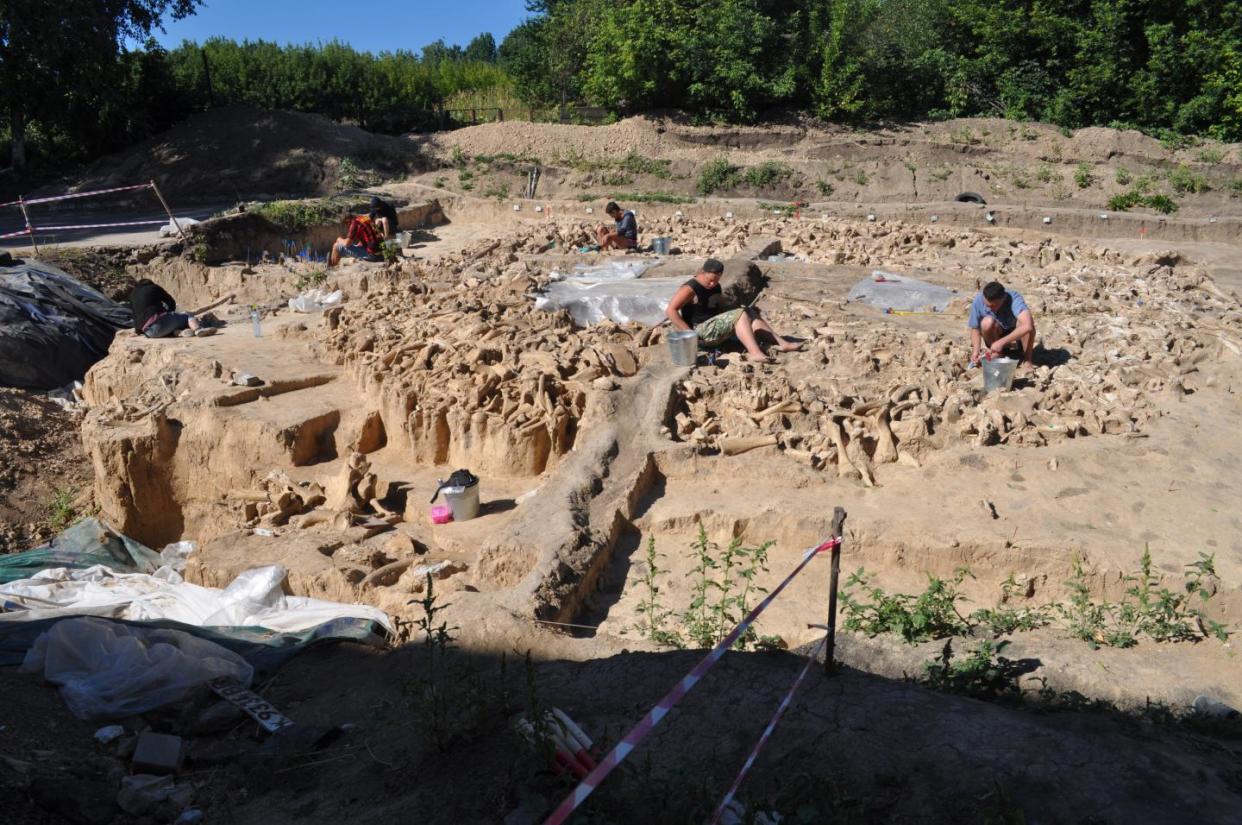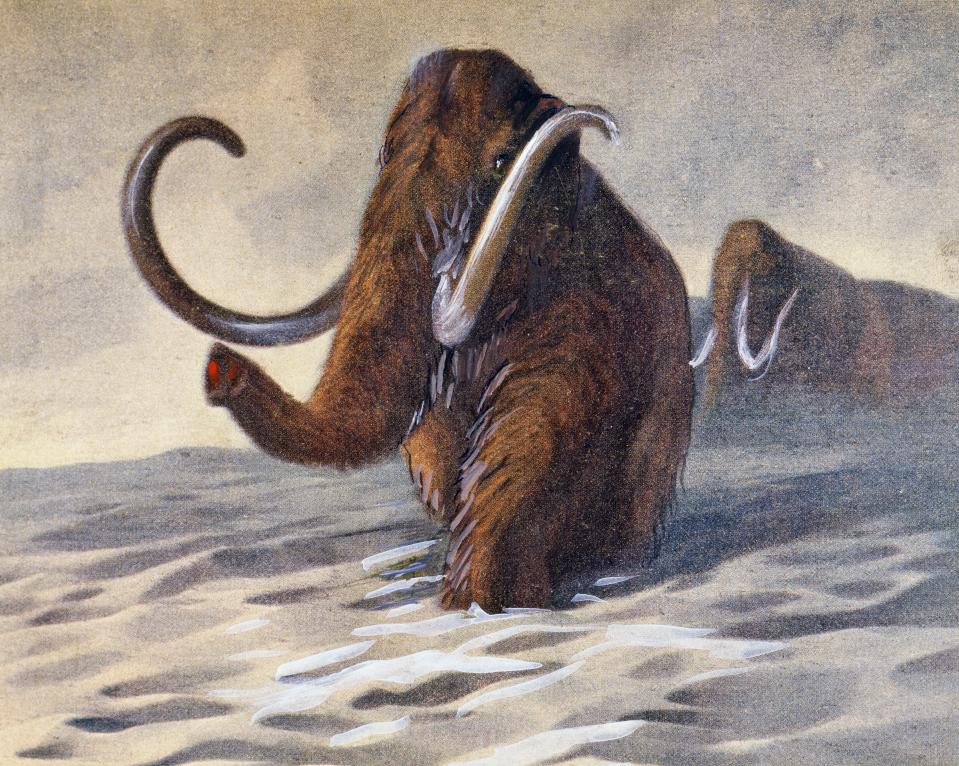Mysterious man-made circle of mammoth bones resurfaces after 20,000 years

A mysterious bone circle built 20,000 years ago could offer clues as to how people survived the last ice age.
There are 70 such structures in Ukraine and the Russian Plain, built, researchers believe, by ancient people using bones from animal graveyards.
New analysis shows the bones at one site are more than 20,000 years old. 64 mammoth skulls are used in the 30ft-by-30ft structure, alongside bones from other animals including horses, bears wolves and arctic foxes.
Read more: Scientists resurrect DNA of world’s last mammoths to work out what killed them
Archaeologists from the University of Exeter found the remains of charred wood and other soft non-woody plant remains within the circular structure, situated just outside the modern village of Kostenki, about 500km south of Moscow.
This shows people were burning wood as well as bones for fuel, and that the communities who lived there had learned where to forage for edible plants during the ice age.
Dr Alexander Pryor, who led the study, said: "Kostenki 11 represents a rare example of Palaeolithic hunter-gatherers living on in this harsh environment.
“What might have brought ancient hunter-gatherers to this site?
Read more; Huge trove of mammoth skeletons found in Mexico

“One possibility is that the mammoths and humans could have come to the area en masse because it had a natural spring that would have provided unfrozen liquid water throughout the winter – rare in this period of extreme cold.
"These finds shed new light on the purpose of these mysterious sites.
“Archaeology is showing us more about how our ancestors survived in this desperately cold and hostile environment at the climax of the last ice age.
Read more: The last woolly mammoths lived in genetic misery
“Most other places at similar latitudes in Europe had been abandoned by this time, but these groups had managed to adapt to find food, shelter and water."
The last ice age, which swept northern Europe between 75-18,000 years ago, reached its coldest and most severe stage at around 23-18,000 years ago, just as the site at Kostenki 11 was being built.
Climate reconstructions indicate that at the time, summers were short and cool and winters were long and cold, with temperatures around -20C or colder.


